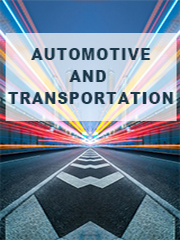Report overview
Antilock Braking System (ABS) is an anti-lock Braking System and can be installed on any motorcycle with hydraulic brakes.As the term implies, the ABS system is used to prevent the wheel from being forced to lock when braking suddenly.Locking wheels and skidding are a major cause of road accidents, especially on wet or dusty roads.Research shows that motorcycle ABS can effectively reduce traffic accidents by 31%.
This report aims to provide a comprehensive presentation of the global market for Motorcycle Anti-lock Braking Systems, with both quantitative and qualitative analysis, to help readers develop business/growth strategies, assess the market competitive situation, analyze their position in the current marketplace, and make informed business decisions regarding Motorcycle Anti-lock Braking Systems. This report contains market size and forecasts of Motorcycle Anti-lock Braking Systems in global, including the following market information:
Global Motorcycle Anti-lock Braking Systems Market Revenue, 2018-2023, 2024-2029, ($ millions)
Global Motorcycle Anti-lock Braking Systems Market Sales, 2018-2023, 2024-2029, (K Units)
Global top five Motorcycle Anti-lock Braking Systems companies in 2022 (%)
The global Motorcycle Anti-lock Braking Systems market was valued at US$ 1265.6 million in 2022 and is projected to reach US$ 4459.8 million by 2029, at a CAGR of 19.7% during the forecast period. The influence of COVID-19 and the Russia-Ukraine War were considered while estimating market sizes.
Global Motorcycle Anti-Lock Braking Systems key players include Bosch, Continental, Nissin, etc. Global top three manufacturers hold a share about 80%.
Europe is the largest market, with a share about 45%, followed by India and North America both have a share about 35 percent.
In terms of product, Multi-channel ABS is the largest segment, with a share about 75%. And in terms of application, the largest application is Front Loading, followed by After Loading.
We surveyed the Motorcycle Anti-lock Braking Systems manufacturers, suppliers, distributors and industry experts on this industry, involving the sales, revenue, demand, price change, product type, recent development and plan, industry trends, drivers, challenges, obstacles, and potential risks.
Total Market by Segment:
Global Motorcycle Anti-lock Braking Systems Market, by Type, 2018-2023, 2024-2029 ($ Millions) & (K Units)
Global Motorcycle Anti-lock Braking Systems Market Segment Percentages, by Type, 2022 (%)
Single channel ABS
Multi-channel ABS
Global Motorcycle Anti-lock Braking Systems Market, by Application, 2018-2023, 2024-2029 ($ Millions) & (K Units)
Global Motorcycle Anti-lock Braking Systems Market Segment Percentages, by Application, 2022 (%)
Front Loading
After Loading
Global Motorcycle Anti-lock Braking Systems Market, By Region and Country, 2018-2023, 2024-2029 ($ Millions) & (K Units)
Global Motorcycle Anti-lock Braking Systems Market Segment Percentages, By Region and Country, 2022 (%)
North America
US
Canada
Mexico
Europe
Germany
France
U.K.
Italy
Russia
Nordic Countries
Benelux
Rest of Europe
Asia
China
Japan
South Korea
Southeast Asia
India
Rest of Asia
South America
Brazil
Argentina
Rest of South America
Middle East & Africa
Turkey
Israel
Saudi Arabia
UAE
Rest of Middle East & Africa
Competitor Analysis
The report also provides analysis of leading market participants including:
Key companies Motorcycle Anti-lock Braking Systems revenues in global market, 2018-2023 (Estimated), ($ millions)
Key companies Motorcycle Anti-lock Braking Systems revenues share in global market, 2022 (%)
Key companies Motorcycle Anti-lock Braking Systems sales in global market, 2018-2023 (Estimated), (K Units)
Key companies Motorcycle Anti-lock Braking Systems sales share in global market, 2022 (%)
Further, the report presents profiles of competitors in the market, key players include:
Bosch
Continental
Nissin
BWI
ADVICS
BMW
Honda
Outline of Major Chapters:
Chapter 1: Introduces the definition of Motorcycle Anti-lock Braking Systems, market overview.
Chapter 2: Global Motorcycle Anti-lock Braking Systems market size in revenue and volume.
Chapter 3: Detailed analysis of Motorcycle Anti-lock Braking Systems manufacturers competitive landscape, price, sales and revenue market share, latest development plan, merger, and acquisition information, etc.
Chapter 4: Provides the analysis of various market segments by type, covering the market size and development potential of each market segment, to help readers find the blue ocean market in different market segments.
Chapter 5: Provides the analysis of various market segments by application, covering the market size and development potential of each market segment, to help readers find the blue ocean market in different downstream markets.
Chapter 6: Sales of Motorcycle Anti-lock Braking Systems in regional level and country level. It provides a quantitative analysis of the market size and development potential of each region and its main countries and introduces the market development, future development prospects, market space of each country in the world.
Chapter 7: Provides profiles of key players, introducing the basic situation of the main companies in the market in detail, including product sales, revenue, price, gross margin, product introduction, recent development, etc.
Chapter 8: Global Motorcycle Anti-lock Braking Systems capacity by region & country.
Chapter 9: Introduces the market dynamics, latest developments of the market, the driving factors and restrictive factors of the market, the challenges and risks faced by manufacturers in the industry, and the analysis of relevant policies in the industry.
Chapter 10: Analysis of industrial chain, including the upstream and downstream of the industry.
Chapter 11: The main points and conclusions of the report.
